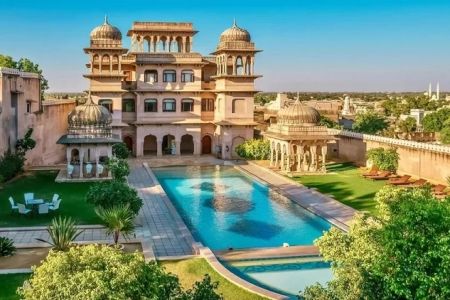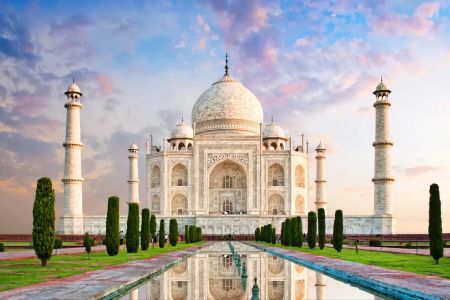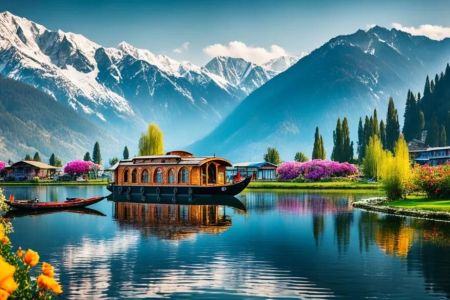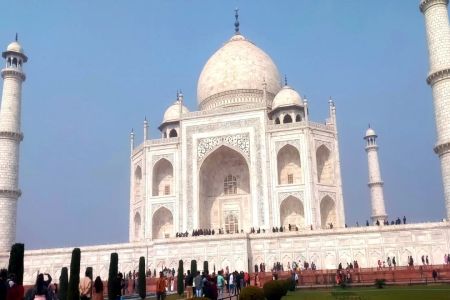Visiting the UNESCO World Heritage Sites in India: A Journey Through History and Culture
1. The Taj Mahal: India's Most Iconic Landmark
The Taj Mahal, located in Agra, is undoubtedly one of the most recognized UNESCO World Heritage sites in India and around the world. As one of the Seven Wonders of the World, it stands as a testament to love and architectural grandeur. I had the privilege of visiting the Taj Mahal, and the moment I saw it from a distance, it took my breath away. The majestic white marble structure, surrounded by manicured gardens and reflecting pools, looked like something straight out of a dream.
The Taj Mahal is not just a beautiful monument; it tells a poignant story of Emperor Shah Jahan's love for his wife Mumtaz Mahal, who passed away during childbirth. This mausoleum, built between 1632 and 1653, is a perfect blend of Persian, Ottoman Turkish, and Indian architectural styles. While walking through the complex, I was struck by the intricate carvings, delicate inlays of semi-precious stones, and the symmetry that makes this structure so mesmerizing.
Visiting the Taj Mahal is an emotional and awe-inspiring experience. Standing in front of the iconic white dome, reflecting in the waters of the front pool, I could not help but feel the weight of history and the enduring legacy of love. It’s a must-visit for anyone interested in India’s rich history and culture.
2. Qutub Minar: A Tower of Ancient Architecture
Qutub Minar, located in Delhi, is another UNESCO World Heritage site that showcases the beauty and intricacy of ancient Indian architecture. At 73 meters, it is the tallest brick minaret in the world. I visited Qutub Minar during my trip to Delhi, and I was struck by the impressive height and the detailed inscriptions on its surface. This 12th-century structure was built by Qutb-ud-Din Aibak, the first ruler of the Delhi Sultanate, and it marks the beginning of Muslim rule in India.
As I explored the Qutub Minar complex, I learned that the minaret was built to celebrate the victory of Aibak’s forces and to serve as a mosque’s tower. The surrounding complex is filled with ruins, including the Quwwat-ul-Islam Mosque, which is one of the oldest mosques in India. What fascinated me most was the ornate carvings and the inscriptions in Arabic, showcasing the skill and artistry of the builders.
The Qutub Minar is a testament to India’s architectural brilliance, and visiting it provides a glimpse into the rich and diverse history of the country. It’s a place where ancient history and modern-day life seamlessly coexist, making it an essential stop for any traveler in Delhi.
3. Red Fort: A Glimpse Into Mughal Splendor
Located in the heart of Delhi, the Red Fort is another UNESCO World Heritage site that captures the opulence of the Mughal Empire. Built by Emperor Shah Jahan in the 17th century, the fort served as the main residence of the Mughal emperors for around 200 years. My visit to the Red Fort was an immersive experience, as I wandered through its massive walls and courtyards, each more breathtaking than the last.
The fort’s architecture is a blend of Persian, Timurid, and Indian styles, which was something I really appreciated as I explored the various structures within the complex. The Diwan-i-Aam, or Hall of Public Audiences, was particularly impressive, with its grand arches and intricate decorations. As I explored the fort’s museum, I also discovered artifacts and historical details about the fort’s significance throughout Indian history.
Walking through the Red Fort’s gates, I felt as though I was stepping back in time, experiencing the grandeur of the Mughal dynasty. Whether you’re interested in history, architecture, or simply want to explore one of India’s most iconic landmarks, the Red Fort is a must-see destination.
4. Fatehpur Sikri: The Abandoned City of the Mughals
Fatehpur Sikri, located near Agra, is an abandoned Mughal city that once served as the capital of the Mughal Empire under Emperor Akbar. Visiting Fatehpur Sikri felt like stepping into a forgotten world. Built in the late 16th century, the city was carefully planned and constructed using red sandstone, and it’s now a UNESCO World Heritage site. When I visited, I was amazed by the sheer scale of the city and its remarkable architecture.
The city is a fusion of Persian, Mughal, and Indian architectural styles. The Jama Masjid, the Buland Darwaza, and the Tomb of Salim Chishti are among the major highlights of Fatehpur Sikri. One of my favorite experiences was visiting the Diwan-i-Khas, or Hall of Private Audiences, which has a central pillar that seems to support the entire structure, displaying Akbar’s fascination with symmetry and architectural innovation.
Although the city was abandoned due to a water shortage, Fatehpur Sikri remains an impressive monument to Mughal splendor. It’s a must-visit for those interested in Mughal history and architecture.
5. Ajanta and Ellora Caves: Ancient Temples and Art
The Ajanta and Ellora Caves, located in Maharashtra, are two of India’s most important historical and religious sites. These ancient rock-cut caves, filled with exquisite Buddhist, Hindu, and Jain sculptures, paintings, and temples, are a UNESCO World Heritage site and an essential stop for any traveler seeking to understand India’s rich religious history.
I had the opportunity to explore both the Ajanta and Ellora caves, and the experience was nothing short of awe-inspiring. The Ajanta caves, known for their stunning wall paintings depicting scenes from the life of Buddha, were a visual feast. The Ellora caves, on the other hand, feature a mix of Buddhist, Hindu, and Jain temples, with intricate carvings and massive stone sculptures that tell the stories of India’s ancient religions.
Visiting these caves is an extraordinary journey through time, offering a glimpse into India’s rich cultural heritage and artistic traditions. The beauty and scale of the carvings and artwork left me deeply moved and with a better understanding of the country’s diverse religious influences.
6. Khajuraho Temples: The Art of Temple Sculpture
Located in Madhya Pradesh, the Khajuraho Temples are renowned for their intricate sculptures and architectural beauty. The temples, built between 950 and 1050 AD, are a UNESCO World Heritage site and are known for their stunning depiction of life, both spiritual and earthly. I visited Khajuraho as part of my tour of India, and the temples’ artwork left me speechless.
The Khajuraho temples are a masterpiece of medieval Indian architecture, with over 20 temples scattered across a large complex. The sculptures on the temples cover a wide range of themes, from gods and goddesses to everyday life, eroticism, and the natural world. Walking through the temples, I felt like I was in a living museum of Indian culture, where every corner revealed a new aspect of life from over a thousand years ago.
Khajuraho is not only an architectural marvel but also a place of cultural significance. The temples’ carvings are not only a reflection of ancient Indian art but also an important part of the country’s cultural and religious identity.
7. Sundarbans: The UNESCO World Heritage Mangrove Forests
The Sundarbans, located in West Bengal, is the largest mangrove forest in the world and home to the famous Bengal tiger. This UNESCO World Heritage site is a unique destination that combines natural beauty, wildlife, and cultural experiences. I took a boat tour through the dense mangrove forests and was astonished by the sheer beauty of this wetland ecosystem.
The Sundarbans are a maze of islands, rivers, and tidal waterways, and the boat ride through the mangroves is an experience like no other. During the tour, I had the chance to see rare wildlife, including crocodiles, wild boars, and, if lucky, the elusive Bengal tiger. The guides are incredibly knowledgeable and share fascinating facts about the ecosystem and conservation efforts in the region.
The Sundarbans are a must-visit for nature lovers and wildlife enthusiasts. It’s an incredible opportunity to explore one of the most biodiverse ecosystems in the world while contributing to the region’s conservation efforts.
India is home to numerous UNESCO World Heritage sites, each offering unique insights into the country's rich history, architecture, and culture. From the iconic Taj Mahal to the stunning temples of Khajuraho, these sites offer travelers a chance to explore the best of India's heritage. To learn more about visiting these incredible destinations, visit Travel India One and start planning your journey today.











